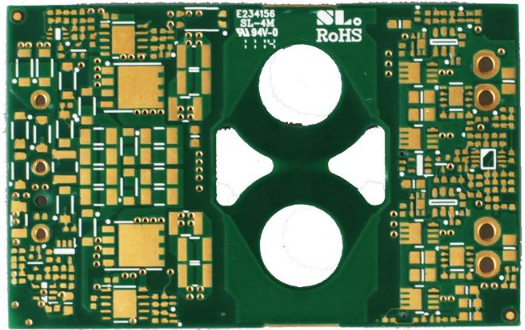In the process of PCB design and production, have you ever encountered the bad situation of PCB eating tin? For engineers, once a PCB board has poor tin-eating problems, it often means that it needs to be re-soldered or even re-made, and the consequences are very troublesome. So, what are the reasons for the poor tin-eating of PCB? How can we avoid this problem?
1. What is PCB eating tin?
A colloquial saying about solder sticking when soldering electronic components, circuits, and circuit boards. The tin is to burn a ball of tin on the solder joints. Eating tin means that the welding material and tin form a strong and seamless welding interface.
2. Why does PCB eat tin?
The phenomenon of poor tin eating is that part of the surface of the circuit is not stained with tin. The reason is that there are grease and impurities on the surface, which can be cleaned with solvent. Improper adjustment of the flux using conditions, such as the air pressure and height required for foaming, etc. The proportion is also one of the important factors, because the amount of flux distribution on the circuit surface is affected by the proportion. Checking the specific gravity can also rule out the possibility of misuse of improper flux due to wrong labeling, poor storage conditions and other reasons. The soldering time or temperature is not enough. Generally, the operating temperature of solder is 55~80 degree Celsius higher than its melting point temperature.
Three, PCB eat tin analysis method
1. Observe whether the components are blackened, discolored, and oxidized. The cleanliness of the components also affects the fullness of the tin;

2. Observe whether there are grease, impurities, etc. attached to the surface of the PCB board and clean it with a solvent. Another thing is to see if there are polished particles left on the surface of the circuit board. The storage time of the circuit board is too long, and the surface of the substrate or the tin surface of the part will be oxidized due to the improper environment. This phenomenon can only be helpful for the tin-eating effect, but it is also quite labor-intensive.
3. Improper use of flux, such as the pressure and height required for foaming, is also one of the important factors. The amount of flux distribution on the surface of the circuit board, improper storage environment or misuse of flux may also cause tin eating bad;
4. The preheating temperature must be appropriate. If the preheating temperature does not reach the required temperature, the solder will not be able to fully melt and solder, or there will be too many impurities in the solder, which may cause poor tin eating.
Four, PCB eat tin processing method
1. Unsuitable parts terminal materials. Check the parts so that the terminals are clean and well dipped. Silicone oil, general release agents and lubricating oils contain this kind of oil, and it is not easy to be completely cleaned. Therefore, in the manufacturing process of electronic parts, chemicals containing silicone oil should be avoided as much as possible. Note that the anti-oxidation oil used in the soldering furnace is not such an oil.
2. The preheating temperature is not enough. The preheating temperature can be adjusted so that the side surface temperature of the substrate parts reaches the required temperature of about 90 degree Celsius~110 degree Celsius.
3. There are too many impurities in the solder, which does not meet the requirements. The impurity in the solder can be measured on time. If it does not meet the requirements and exceeds the standard, replace the solder that meets the standard.
4. Keep the transfer of the substrate after the soldering is stable, and the substrate to be soldered is cooled enough before moving, which can avoid this problem. The solution is to pass the tin wave again.